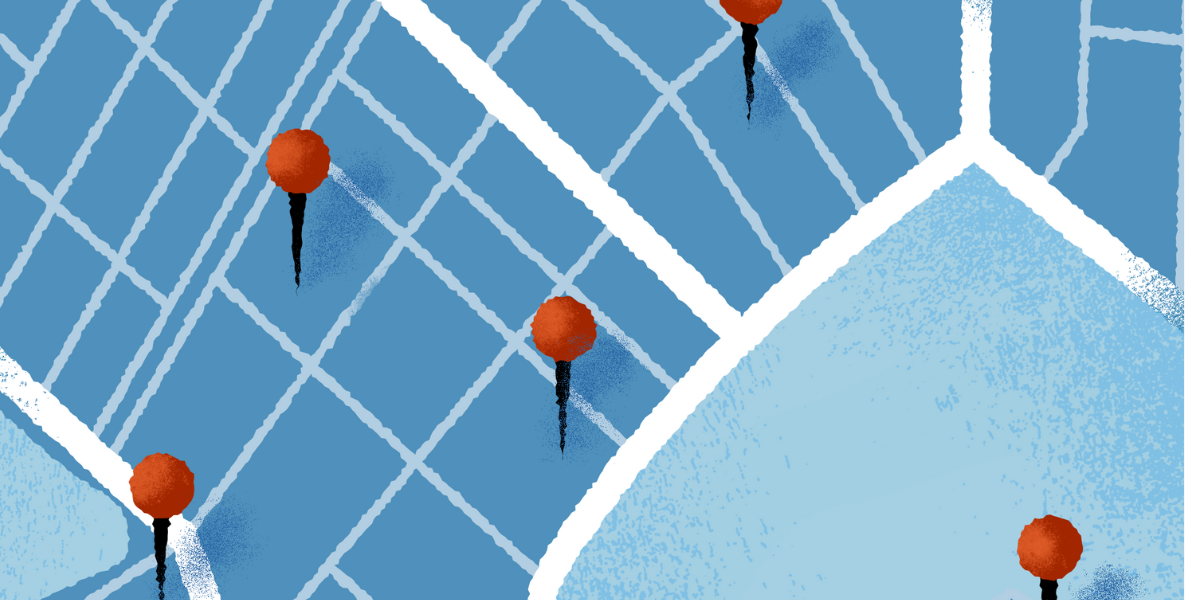What is GeoIP
and Why Does It Matter?
by Leo Vegoda

“I’m not lost for I know where I am. But however, where I am may be lost.” – Winnie the Pooh
Many organizations have this problem when they get new IP addresses. They know where their network is. They put the right information in the relevant databases. But key services, like governments, retailers, and video streamers block those addresses because they think they are located outside of their service region.
Read on to learn how to share this information automatically when it changes. And how to contact real people when automation isn’t enough.
What is GeoIP?
Sometimes IP addresses associated with a particular place are denied service. In other cases, providers only deliver services to IP addresses associated with one specific place. The issue revolves around GeoIP filtering.
Organizations implement these filters for different reasons. In some cases, they must comply with regulations. In others there are geographic licensing agreements. And sometimes it’s just down to managing the risk of fraud.
Whatever the reason, filtering based on apparent location can be a challenge when starting to use IP addresses that were previously used elsewhere.
Solving the Problem with Automation
We have written about this before and explained some of the ways to fix the problem. One of these remedies is a relatively new standard (RFC 9092) for sharing location information in structured data.
In March 2023 there were almost one million IPv4 address blocks routed on the internet. (The precise number depends on which part of the internet you look from.) If most or all these networks used the new protocol for finding and using geofeed data, the problem would be close to being solved. Sadly, that’s not the case. But the power of measurement and transparency has been deployed.
Three engineers, Massimo Candela, Emanuele Candela, and Lorenzo Ariemma are reporting on takeup. Their tool, called geolocatemuch.com, lets you test your own geofeed when you are getting it ready. It will check that it is discoverable and properly formatted. If it is, it will report back what it sees to you.
They currently report that more than 63,000 IP address blocks have geofeeds. That’s just over five percent of the total, when IPv6 address blocks are included. This number might seem low. But it’s worth noting that nine of the 11 services they track have adopted the file format. Seven of them will automatically discover the files. Some discover changes every day. Others take up to seven days.
There is a good chance that market pressure will force adoption by the rest.
Of course, this only solves half of the problem. The commercial GeoIP services compete on the quality of the data they provide their users. One way to drive adoption is to implement this protocol and let the GeoIP service providers know on social media. There is a link for this next to each provider’s listing.
The Other Half of the Problem
This protocol and this tool help solve half of the problem: getting the right information to the organizations that collate the data. The other half of the problem is updating service configurations based on it.
Each data user has their own schedule and priorities. They might update every day but they might only update each month.
This is a problem that can’t be solved with technology because it’s about organizational priorities. Some organizations want to completely automate while others only want to make updates on scheduled dates after they have been signed off by a change advisory board.
This is why The Brothers WISP provides a page listing contact information for the major GeoIP services and some of the most important content and gaming users.
What Can You Do?
There are four things you can do to reduce the pain of GeoIP filters.
- Use the gelocatemuch.com tool to check that you are publishing data in the right format.
- Check that your IP address blocks are included in the file of all validated feeds.
- Contact GeoIP data providers that don’t pick up your geofeed data.
- Contact users of the data who are slow updating their configurations.